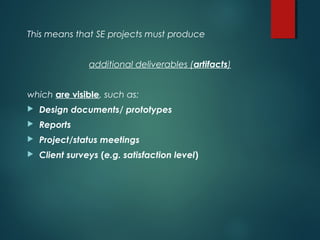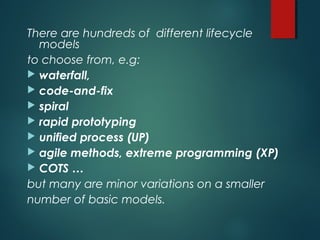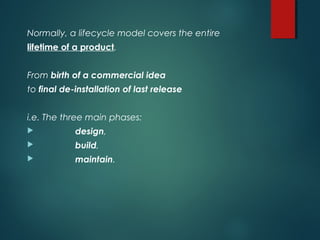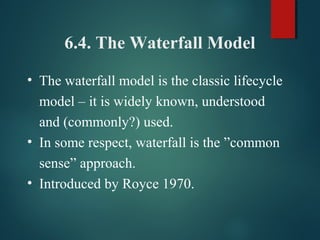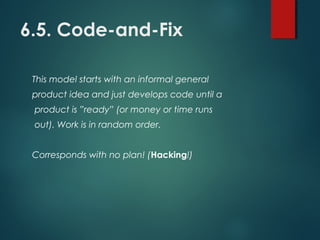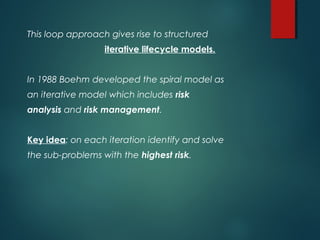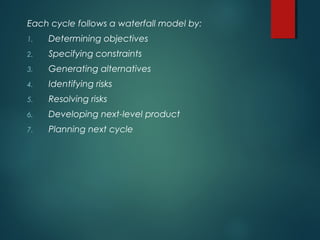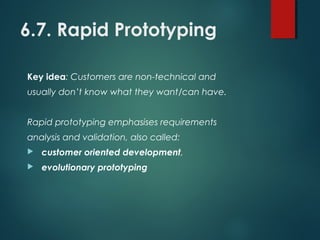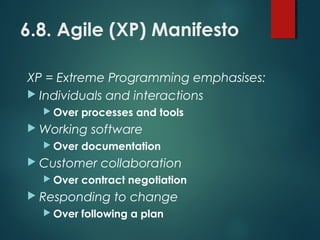The document discusses various software lifecycle models that provide frameworks for planning, organizing, and managing software development projects. It outlines the importance of project planning under constraints and highlights different models such as Waterfall, Spiral, Rapid Prototyping, Agile, and the Unified Process, each with its advantages and disadvantages. The document emphasizes that selecting the right lifecycle model can impact development speed, product quality, project visibility, and risk management.
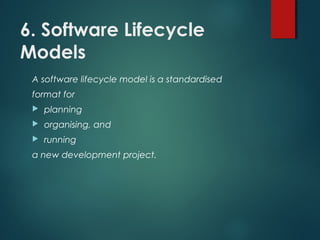



![Project planning is the art of scheduling the
necessary activities, in time, space and across
staff in order to optimise:
project risk [low] (see later)
profit [high]
customer satisfaction [high]
worker satisfaction [high]
long-term company goals](https://image.slidesharecdn.com/prutt05lec6-150526123625-lva1-app6891/85/Software-Life-Cylce-Model-5-320.jpg)




